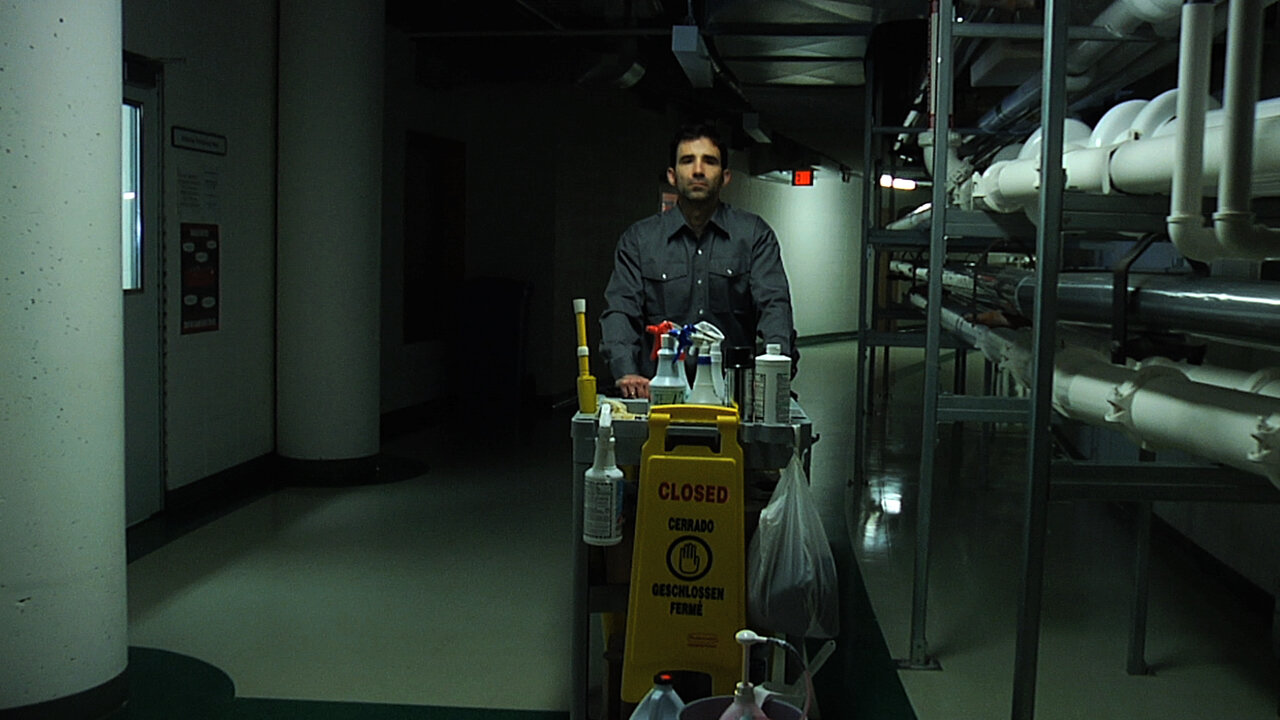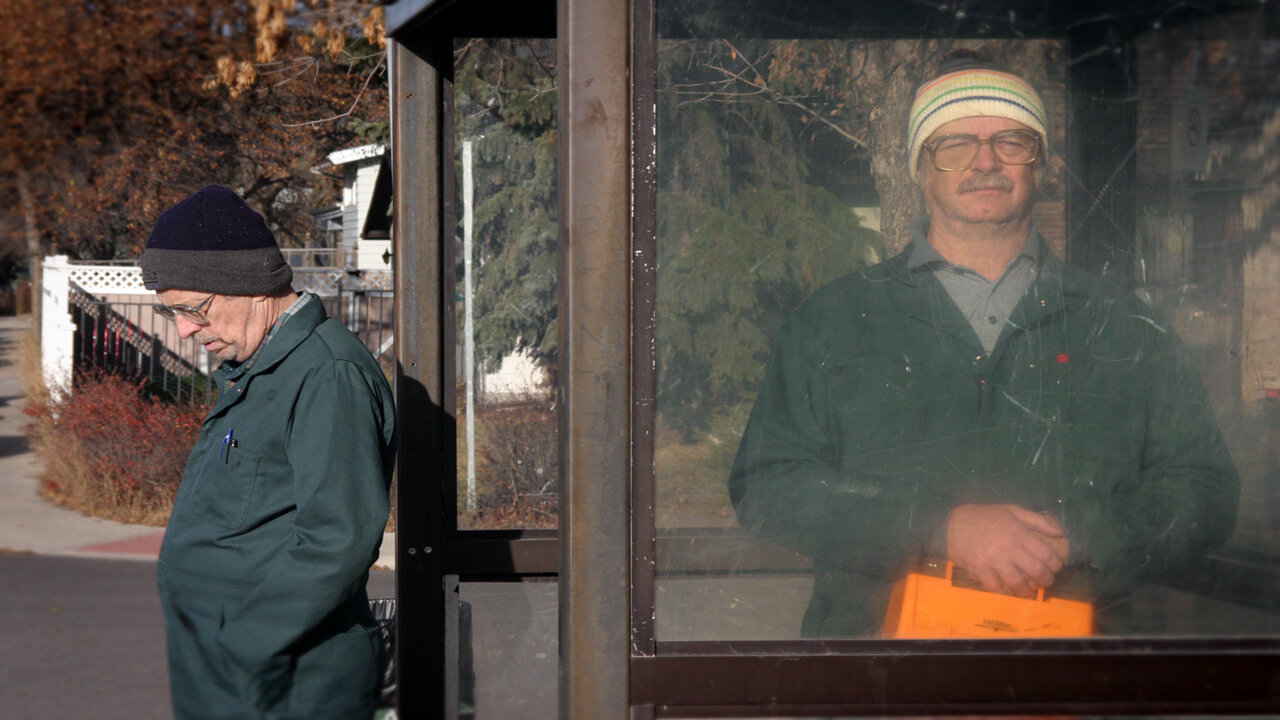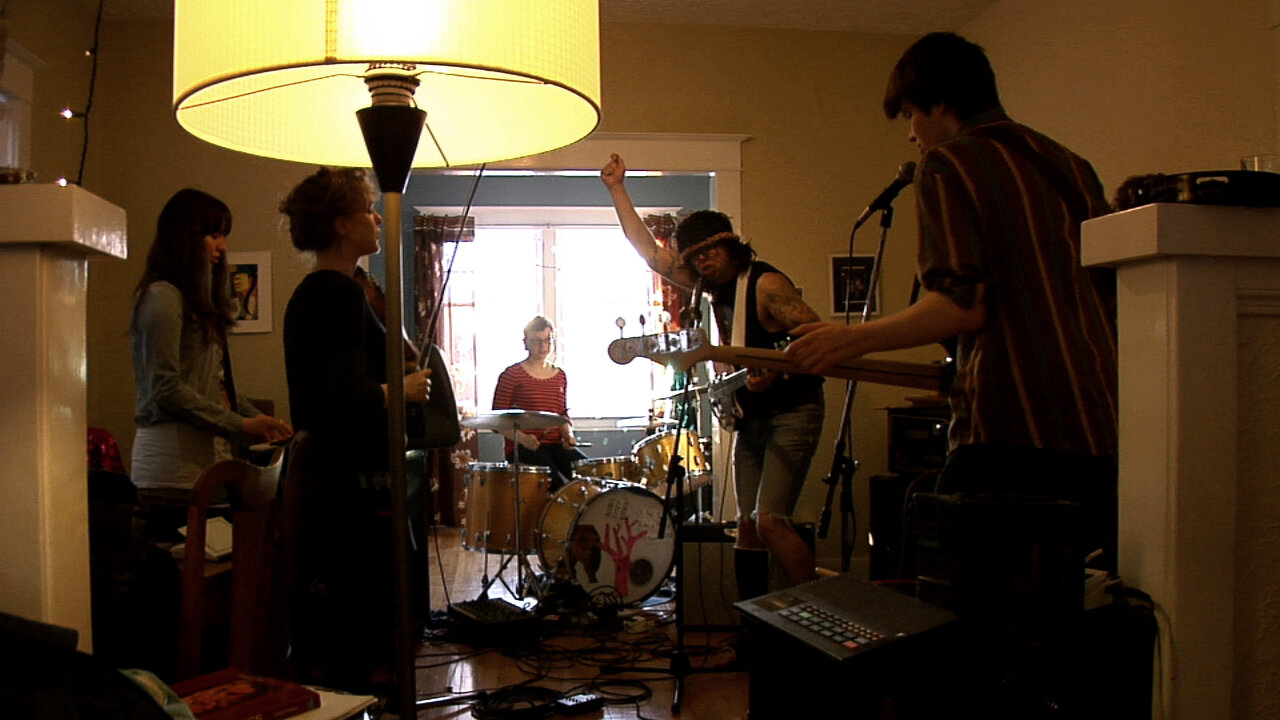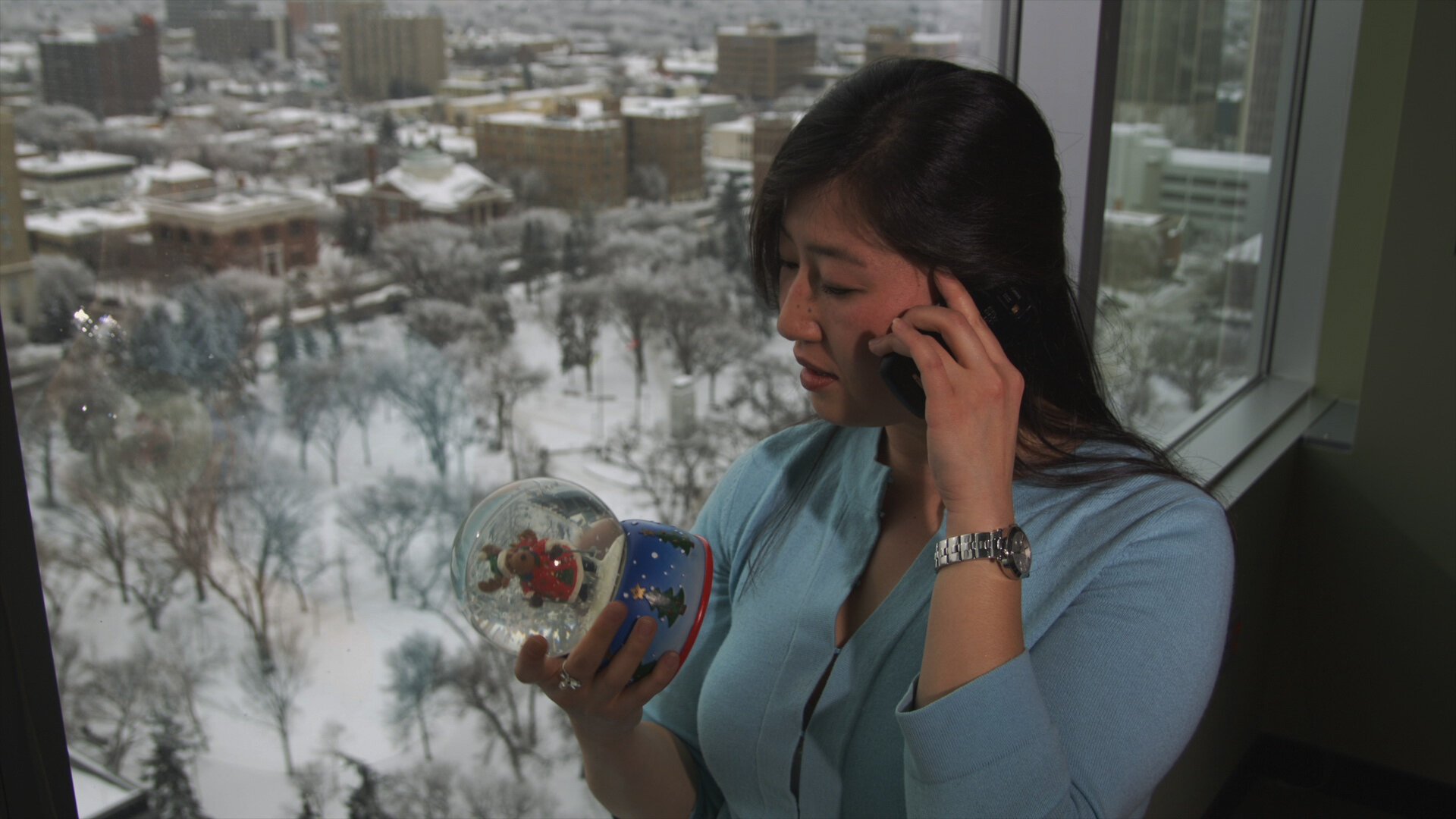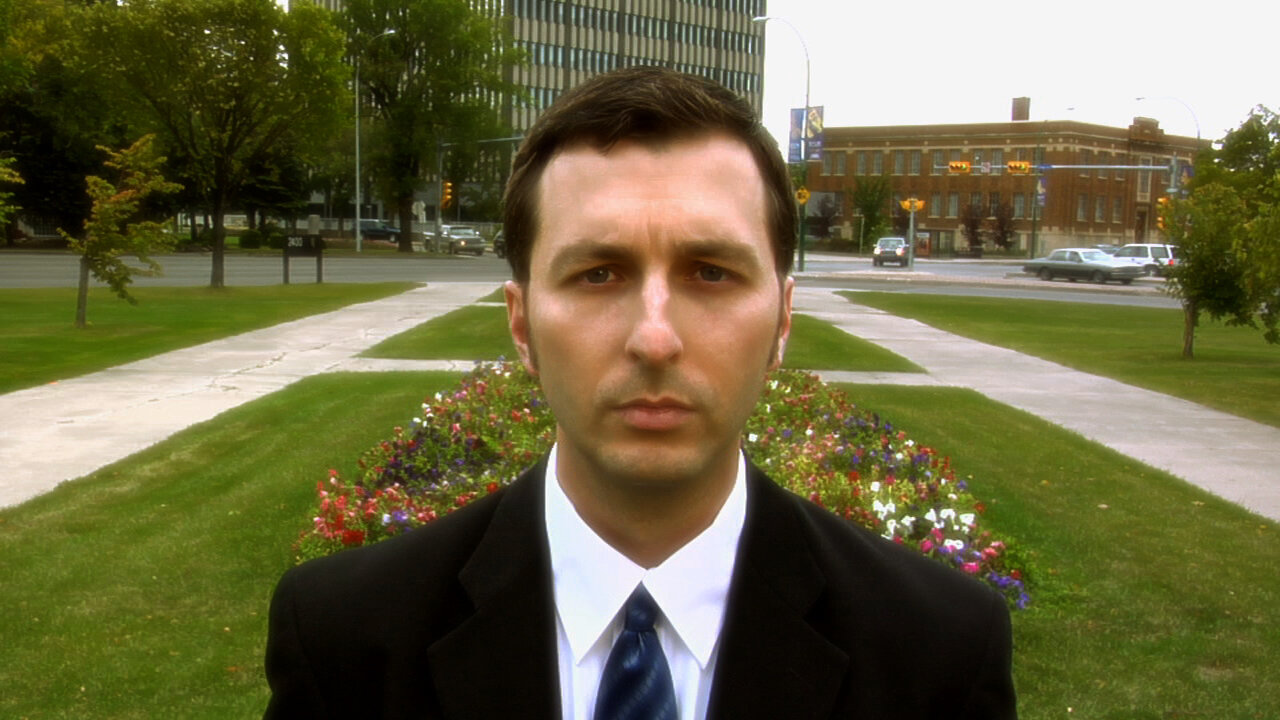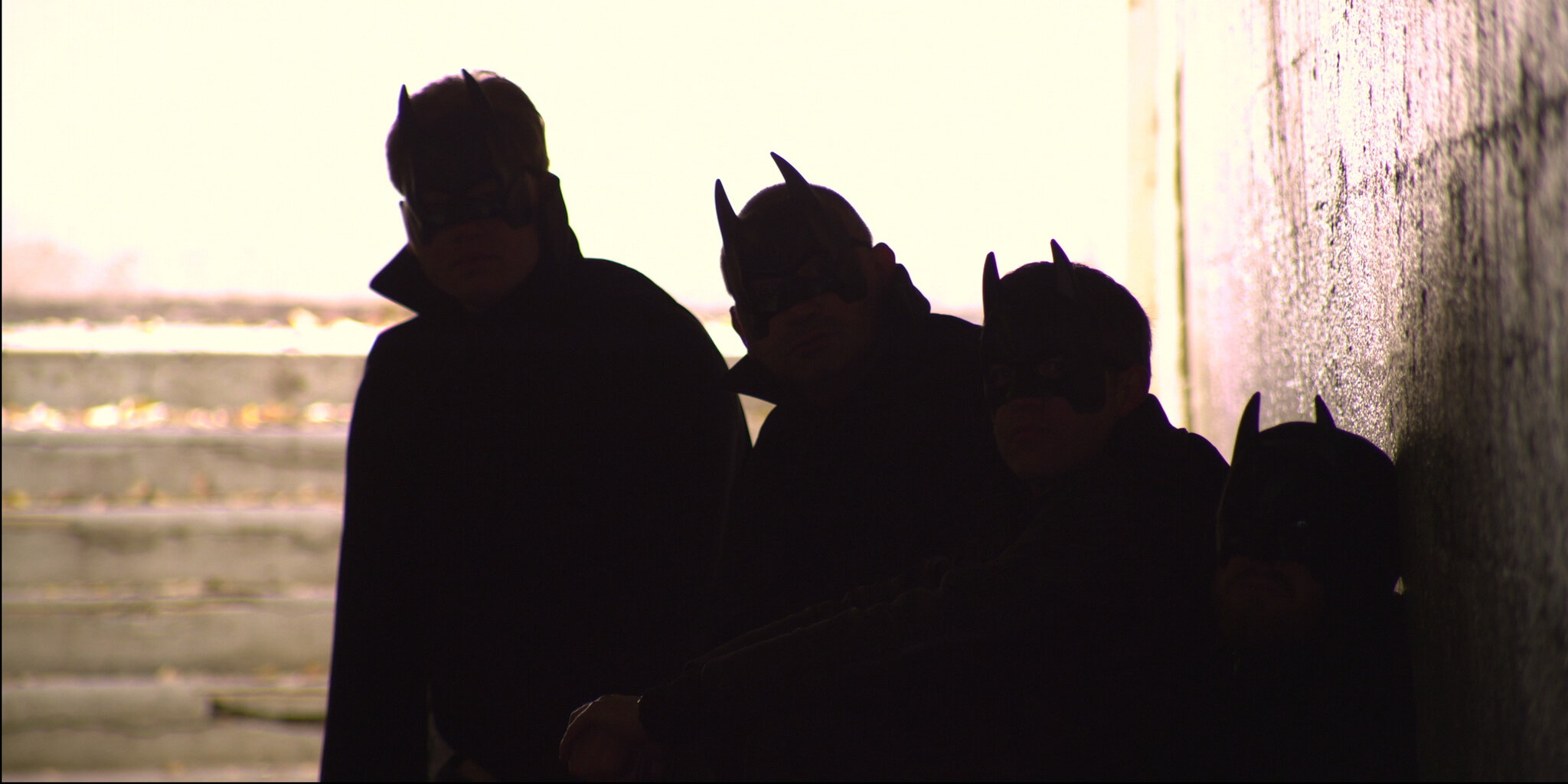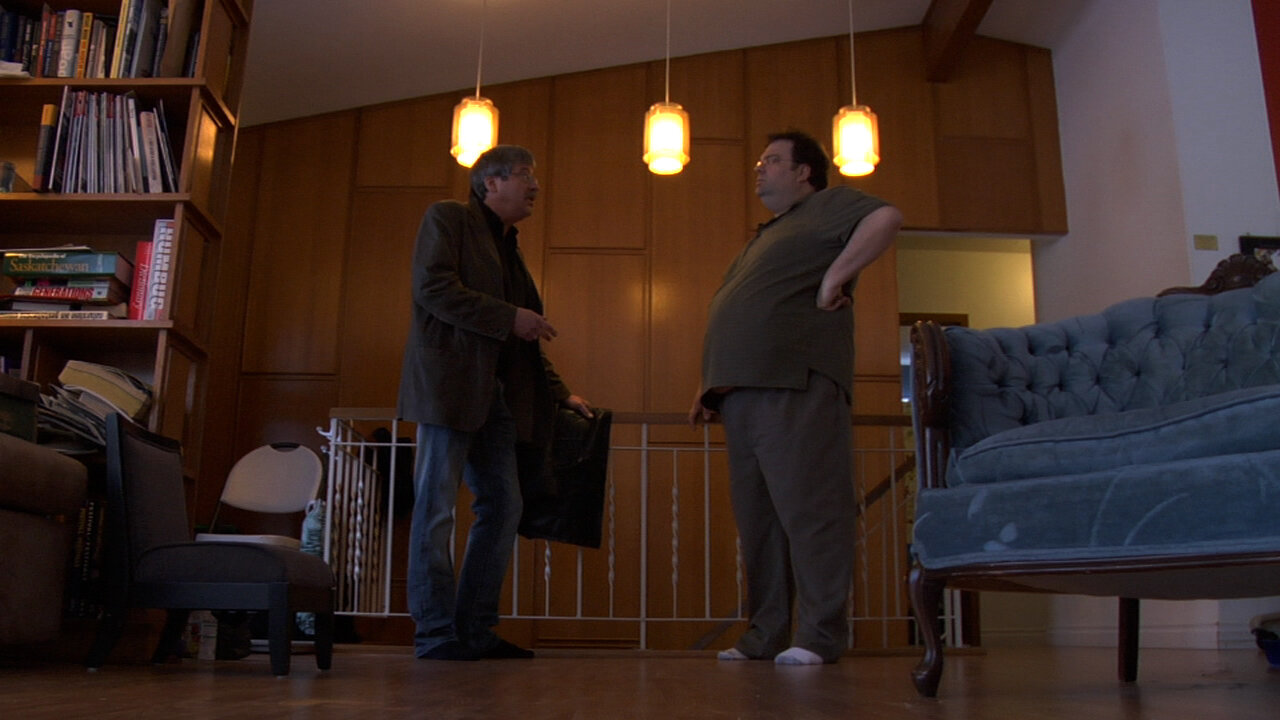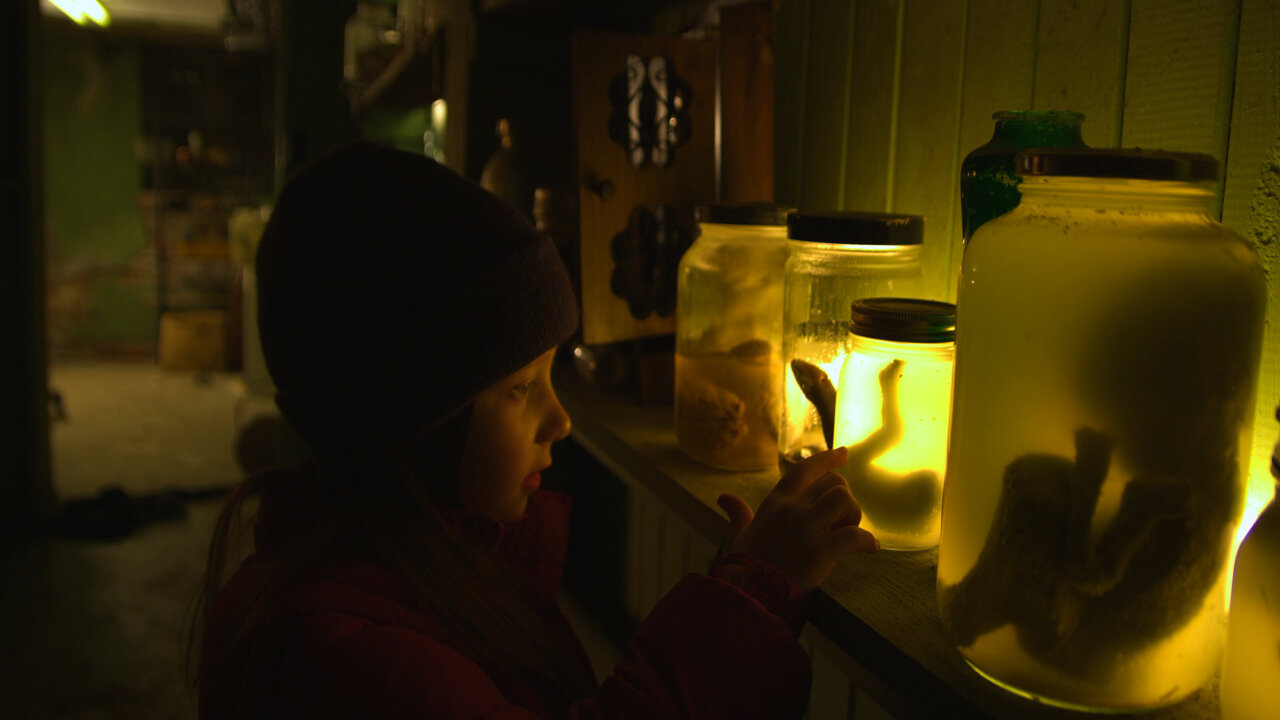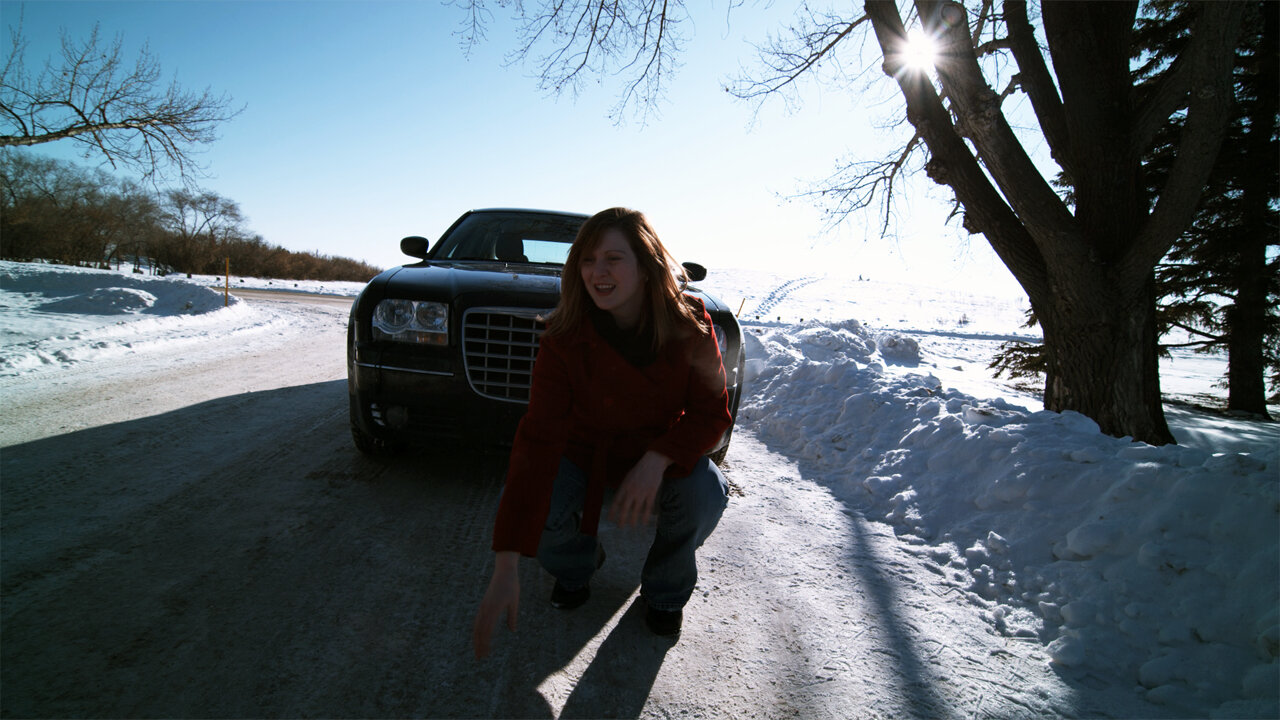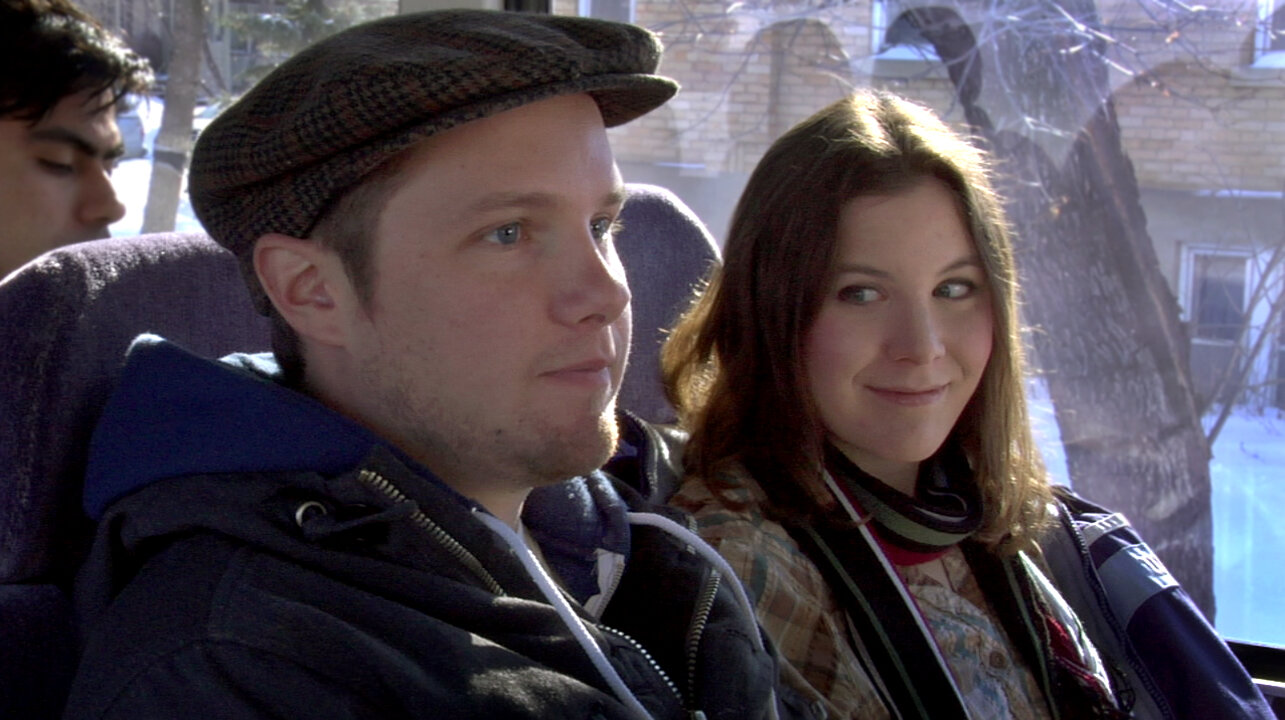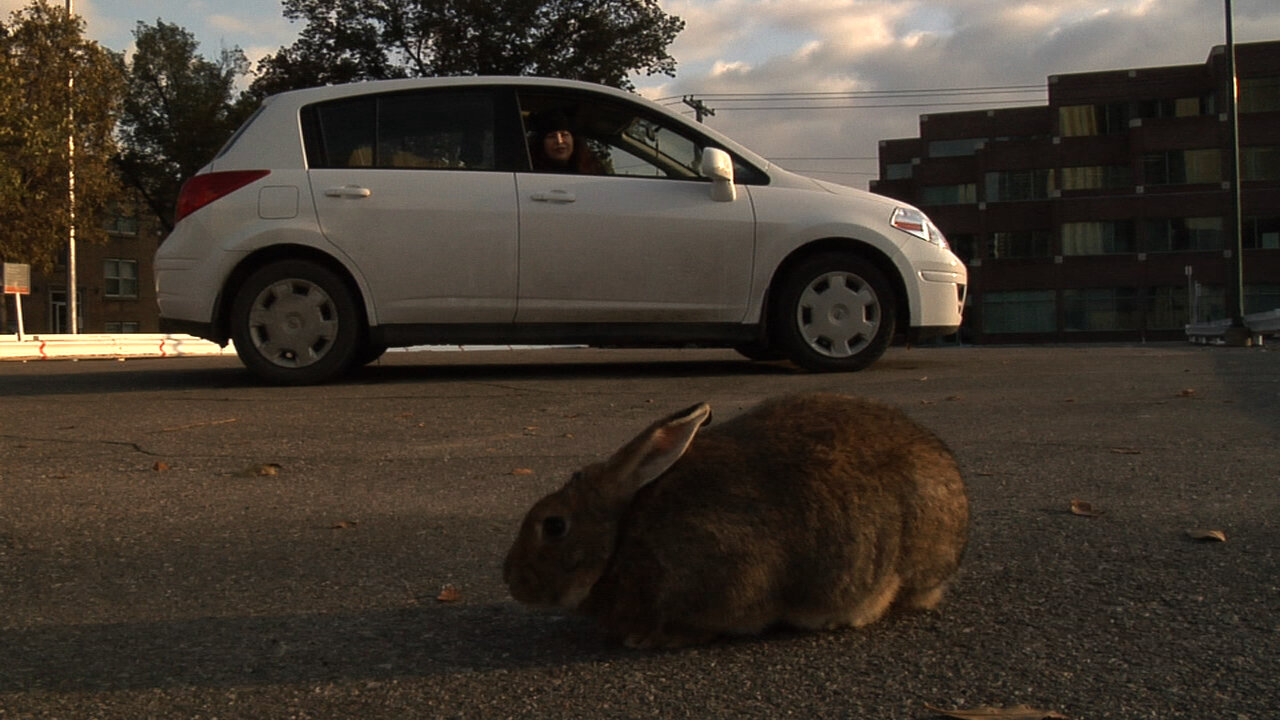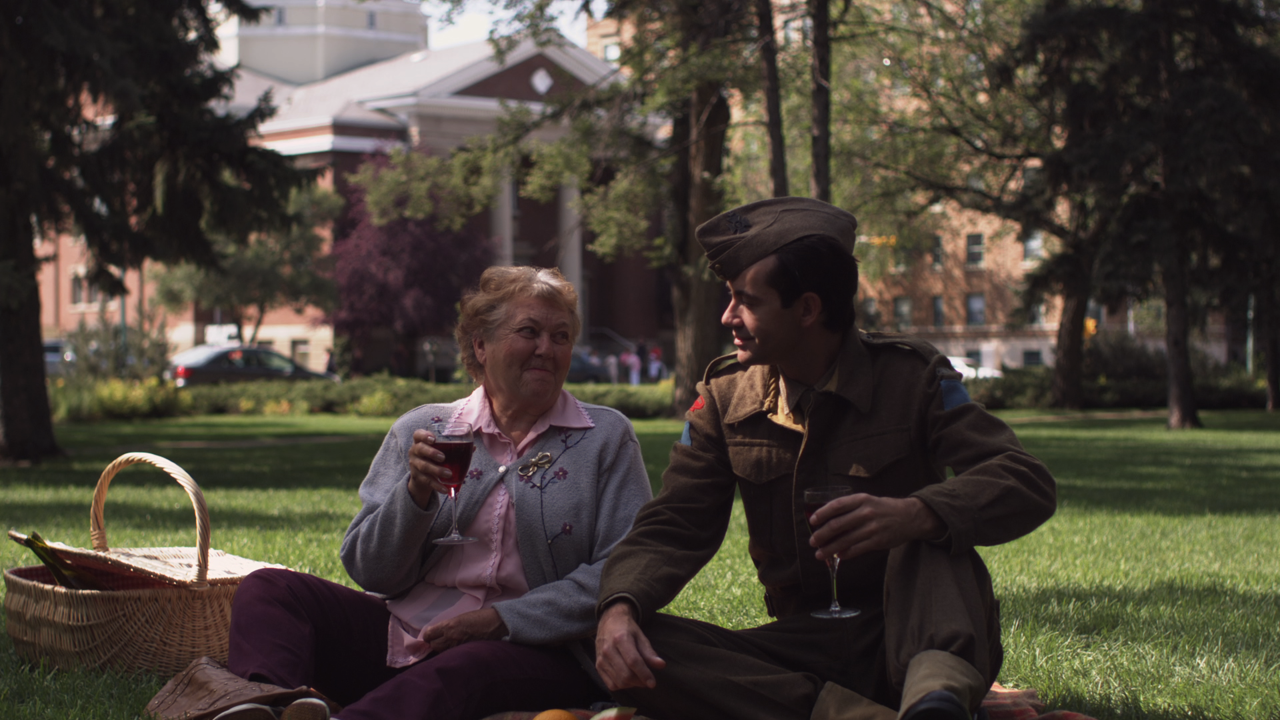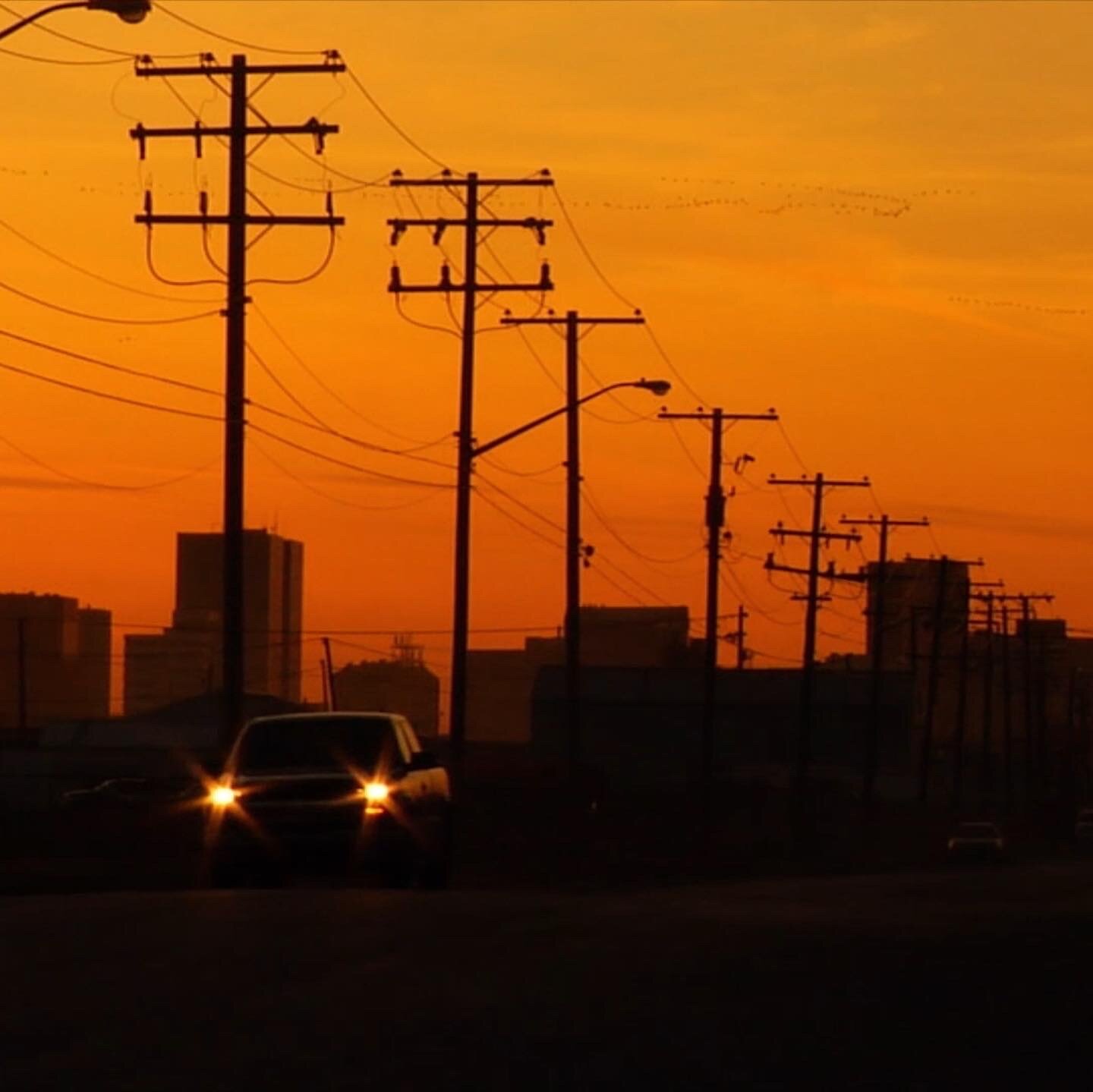No one wants to live in dank
A decade after I Heart Regina
by Mark Wihak
In the ten years since I Heart Regina had its world premiere at the Montreal World Film Festival, filmmaking in Saskatchewan has seen a great deal of change. The film, which tells "13 stories from the Centre of the Universe", started out as a cheeky response to the Cities of Love film series: Paris, je t'aime and New York, I Love You were the first wave, packed full of movie stars and brand-name directors, set in glamourous "world cities"; Rio de Janeiro and Berlin would follow. But IHR became something much more than a raspberry from flyover land, combining the work of 14 directors and more than 200 Reginians on a collaborative project that asserted the importance of telling your own stories, even if they take place in the 24th largest city in Canada.
Wanda Schmöckel and I came up with the idea for IHR, and as soon as we spoke to some other filmmakers, it quickly built momentum. We wanted to build connections across the film community in Regina: indie and industry, emerging and experienced, Filmpool members working alongside union craftspeople from the thriving film industry. Everyone volunteered their time and talent; it was old-school Saskatchewan — a communal activity leading to something bigger than any individual could do.
IHR tells 13 stories from Regina, but we knew that there were many more to be told. There were dozens of filmmakers we would have loved to have brought onto the project if time and resources allowed. Our original wish list had 48 filmmakers’ names on it — and there are absences that we still feel; because of other commitments and unforeseen circumstances, Zarqa Nawaz, Cory Generoux, and Gabriel Yahyahkeekoot had to withdraw before they could complete their IHR films. At a minimum, IHR is an archive of Regina in 2010: The Plains Hotel and its weather tower; an intercity bus service; the Novia Café and flip phones and talk of a domed stadium; prime Rah Rah.
Sadly, the film also marked the peak of film production in Saskatchewan. As IHR was in post-production, things were about to change. SCN, the provincial educational broadcaster — a central pillar of the film industry over the previous decade and a key financial partner of IHR — was shut down suddenly in March 2010 by the Saskatchewan Party government of Brad Wall, and eventually sold off at a bargain-basement price to Toronto-based Rogers Communications — it's now Citytv Saskatchewan. Two years later, Wall's government cut the Saskatchewan Film Employment Tax Credit, devasting the province's film industry that had produced dozens of feature films and series such as Corner Gas, Moccasin Flats, Little Mosque on the Prairie, Wapos Bay, and Renegadepress.com (which helped develop the career of future Emmy winner Tatiana Maslany). As the industry withered, many Saskatchewan filmmakers, craftspeople, and performers, including IHR's producer and seven of the 14 directors, chose to leave for provinces that understood the economic value of having a film industry.
“the IHR project, especially 10 years later, is a diary of the industry that once was — the people, the places, and the ideas we had. ”
IHR director Jason Nielsen recalls a deep sense of community while making the film. “Everybody went out of their way to help. Then the Sask Party closed the industry and the film shifted from a love song to a farewell tune." For Jason, "it was either stay in Saskatchewan and leave my craft, or move away." He headed west. IHR director Rob King moved to Toronto. "Over the years I had thought about moving... but always stayed because we had something going in Saskatchewan and it was a good place to raise kids,” he says. “But after the collapse in government support, we sold our house and said goodbye." For IHR director Jackie Dzuba, "leaving Saskatchewan was very difficult. I had a good life there. I was never looking for a way out." As work disappeared in Saskatchewan, Jackie sold up and moved to Kelowna, BC. “We picked Kelowna over Vancouver because of affordability, yet we really struggled for the first long while,” she says. “I would say it was probably a three or four year setback, financially. That’s huge when you are in your fifties." IHR producer Becki Brisson (formerly Becki Hui) weighed her options; "I was trying to decide if I should stay in Regina and try to transition to a different career, or if it was time to leave to work in the film industry elsewhere." She landed a position in Calgary at the Shaw Rocket Fund, an investment resource for television and digital production, where she's now the Manager of Business Affairs.
While the industry in Saskatchewan has shrunk over the past decade, film in Canada has seen tremendous growth, with more than $9 billion in production generated in 2019, fueled by the needs of broadcasters and movie studios, and the rapidly expanding demand from streaming sites like Netflix, Apple, and Amazon. Manitoba saw its production volume increase by more than 300 per cent in the past decade. British Columbia and Ontario more than doubled their already robust industries, and significant increases in production dollars were seen in Alberta, Quebec, and Newfoundland. Becki Brisson's position at the Shaw Rocket Fund gives her a perspective on the Canadian industry; "As someone who reviews funding applications from productions across Canada, it still pains me to see very few, if any, applications from Saskatchewan,” she says. “I know a lot of people who had to leave [Saskatchewan] to work in the industry, and many who could not leave and had to change careers, or struggled to find regular employment."
Like Brisson, the IHR filmmakers who left Saskatchewan forged careers in their new homes, though it wasn't always easy. "I landed in Toronto with no work and walked the streets for a long time,” Rob King says. He took hundreds of meetings and "I also wrote a lot of short stories and some of those became scripts. Those scripts got me other paying gigs. Yet for nearly five years, I never worked here [Toronto]. Instead, I worked in Europe, Japan and on the west coast. But it was that alienation I first felt that spurred the writing, and that lead to everything else."
Jason Nielsen experienced, "the loss of community and the industry that we helped build from scratch, coupled with the loss of home and family." Since his move to Vancouver, he's worked as an editor on more than 40 projects, while still finding time for his own creative work. Work started to happen for Jackie Dzuba in her new Kelowna base, including some projects that originated from her home province. "Strangely enough, Saskatchewan productions were starting to shoot here in Kelowna — one of the few non-union zones in the province,” she says. “It's that, and the tax credit, that draws production here. And from that I got work locally and then ventured into a few other local BC films."
While the Saskatchewan industry was decimated, the past ten years haven't been all bad news for those filmmakers who remained. IHR Director Lowell Dean directed four Saskatchewan-made features over the past decade — prolific for any Canadian filmmaker, unprecedented for a Saskatchewan-based one. Lowell saw what was happening, “most of my industry friends have relocated to provinces with tax credits", and while he's been pursuing projects in Toronto, he remains hopeful. "I would love nothing more than to see a film and TV industry return to Saskatchewan. Hopefully that can happen one day soon."
Brian Stockton built on his experience of working with actor James Whittingham on the IHR short Ice, with the two collaborating again on the 2015 feature film The Sabbatical. The loss of the Film Tax Credit didn't have any impact on IHR director Dianne Ouellette's prolific productivity — she continues to make films, with support from agencies like the Filmpool, SK Arts (aka Saskatchewan Arts Board), and the Canada Council. "If you are passionate enough about making films, you will continue to do so," she says.
There's been encouraging growth in the indie filmmaking community in Saskatchewan over the past ten years, with the Filmpool serving as an important hub. The launch of the Saskatchewan Independent Film Awards seven years ago recognises the vitality and range of work being done around the province, from shorts, to features, to web series.While most indie films tap on the filmmaker's wallet, and the volunteer contributions of crew and cast, support for independent work is available from the Filmpool and SK Arts. Telefilm's Talent to Watch program has provided opportunities for emerging filmmakers to launch first features and web series, and Creative Saskatchewan is able to support a handful of productions every year. The NFB has engaged with more Saskatchewan filmmakers over the past few years, leading to films from emerging filmmakers, and important works like Tasha Hubbard's nîpawistamâsowin: We Will Stand Up. Citytv Saskatchewan retained some of SCN's CRTC mandate to license Saskatchewan-made documentary and children's programming, such as IHR director Robin Schlaht's 2019 documentary series Making It in Saskatchewan, and IHR contributor Adrian Dean's animated children's series Doowett.
For Jackie Dzuba, "the IHR project, especially 10 years later, is a diary of the industry that once was — the people, the places, and the ideas we had." Looking back on the past decade, it's hard not to feel frustrated at political decisions that devasted a thriving industry, squandered opportunities for growth, and led to the loss of talented and trained people who had to leave the province. While it's not productive to focus on the mistakes of the past decade, it's important to learn from them. We have to continue to nurture and celebrate indie filmmaking, and with provincial and municipal elections coming this fall, we also need to make sure that candidates know we're not satisfied with a status quo that's not working. In order to rebuild an industry that can bring in financing from outside the province and create employment, Saskatchewan needs a production environment that's competitive with the other provinces. "I would hope that future provincial governments would look to Manitoba as an example of how film and television tax credits... can help to build a strong film industry and diversify the province's economy,” Becki Brisson notes.
When Jason Nielsen returns to Saskatchewan for visits, aspects of it remind him of the Regina of his youth, and give him a rationale for optimism. "It's become more depressed since oil prices have tanked, and the Sask Party squandered the opportunities of the boom period,” he says. “Economically, Regina is more like [it was in] the 1980s and 90s — which was a good time to make art and experiment. Maybe now is a good time to do that again!"
As we mark the 10th anniversary of I Heart Regina, we look forward to seeing the stories a new generation of Saskatchewan filmmakers will share with us
Mark Wihak's episodic feature-length film ‘Resting Potential’ is in post-production.
Images top row (l-r): A Foreign Song, Maurcio Carvajal; Brothers, Jason Nielsen; Rah Rah, Eric Hill; The Ant & The Elephant, Mark Wihak; Minus 47, Jackie Dzuba.
Middle row (l-r): Mosasaur, Brett Bell; Rejectomy, Rob King; Ice, Brian Stockton; Hanson and Greta, Terry Mialkowsky; Kathryn, Dianne Ouelette.
Bottom row (l-r): Don’t Slip on the Ice, Robin Schlaht; Except When I Don’t, Wanda Schmöckel; Remembrance Day, Lowell Dean.

